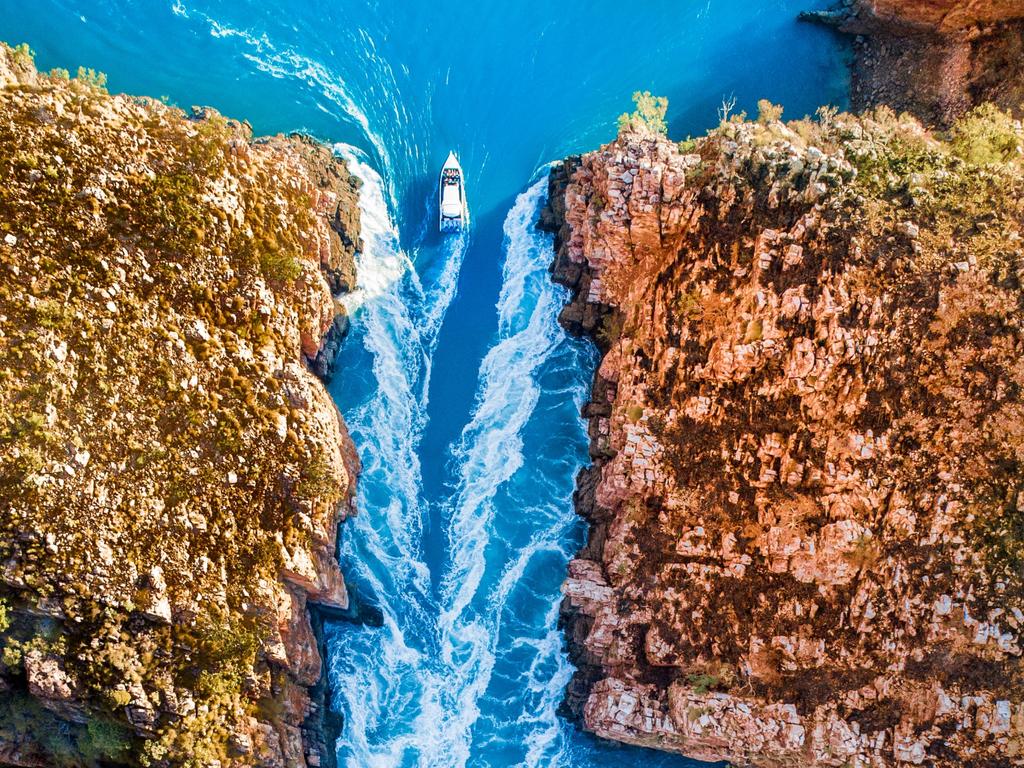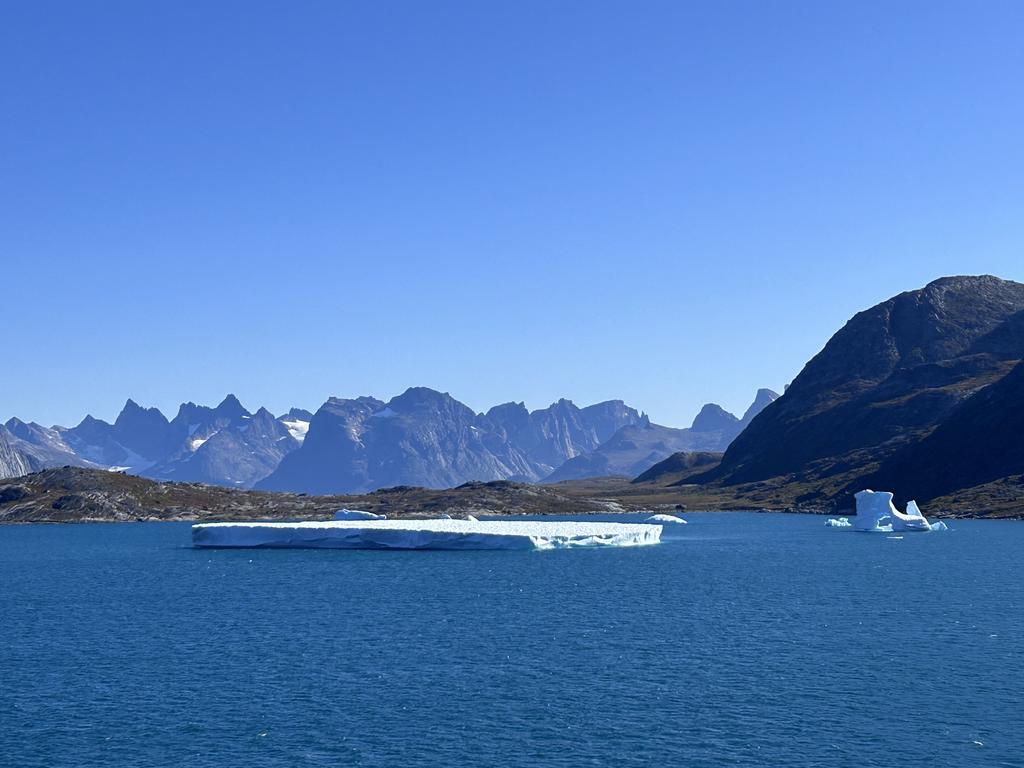On Norwegian Star’s epic 17-day Rio to Lisbon cruise adventure
An epic voyage that spans continents and hemispheres takes guests to destinations they might otherwise never see.

“Please tell me something,” our dining companion asks politely one night. “Why are you here?” A South American architect and last-minute travelling companion for his ageing father, he’s a novice cruiser. On board this trans-Atlantic crossing mostly from a sense of duty, rather than any mad desire to travel by sea, he’s curious about what has brought some of his 2100-odd travelling companions, from dozens of nations, on this 17-day journey from Rio de Janeiro to Lisbon.
His question is simple but it invites multiple responses. Cruises come with a range of benefits, from all-inclusive fares to the ability to unpack once, sit back and be transported from port to port.

But they can also take you to places you might not otherwise visit, which is how we, too, find ourselves on this still evening aboard Norwegian Cruise Line’s Norwegian Star, somewhere in the Atlantic Ocean, on a voyage that spans continents and hemispheres. From South America to Europe with a brief stop in Africa at the isolated island nation of Cabo Verde, our journey feels like a civilised adventure awash with exotic locations and cultures.
Along the east coast of Brazil, via the Canary Islands and Madeira, we travel about as far from Australia as the globe will allow. There is plenty of time to explore and to relax, and three successive sea days – the longest we are away from land – prove to be just the right amount of time to switch off before returning to civilisation.

Leaving Rio after a long and chaotic embarkation, we anchor the following morning off the coast of Buzios. An upmarket beach town favoured by Argentinian holiday makers, it was largely unnoticed until French film star Brigitte Bardot arrived in the 1960s. Thanks mostly to the ensuing fame, Buzios today is compact and cosmopolitan. It also has close to 20 beaches, although our short stay allows for little more than a wander around the main cobblestoned street, with its smart boutiques and cafes. After a $5 caipirinha at a waterfront bar, it’s time to go.
The following days are a mix of South American flavours. On board, a quartet of Argentinian dancers puts on some slick tango shows, and offers a trio of masterclasses to pairs of mostly hopeless but happy passengers. On land, there are more Brazilian ports. Salvador, though tired, has a rich, daunting history. The site of the first slave market in the New World, a staggering one million slaves were shipped here over 300 years. Today the city is a centre of Afro-Brazilian culture, with Bahian women in elaborate headwear and voluminous skirts posing for photos along the roughly cobbled streets of the historic Pelourinho district.

A walking tour reveals the city’s backstory as one of the oldest European cities founded in the Americas, while the local carnival museum gives a colourful insight into the area’s popular annual celebration, second only to Rio’s. At the museum’s rooftop eatery, an impromptu mid-afternoon meal of vegan moqueca – a riff on the local seafood stew – is outstanding.
So far our itinerary has been interesting and well paced, but we suspect it won’t last. Many cruises feature at least one stop that appears to be included mostly for geographical reasons, meaning that for passengers it’s often little more than a chance to stretch your legs. Could Recife be that place?

The Brazilian city’s old town is shabby and shuttered when we disembark early one morning, and it seems like this might be the day for the briefest of visits. But history is everywhere on this continent, and when those shutters are unlocked later in the morning we discover the site of the first synagogue in the Americas, established about 400 years ago. The small footprint of the on-site museum, which is mostly all that exists today, belies its significance; after they were expelled from Brazil, some of the city’s exiled Jews headed to New Amsterdam, where they were among the first members of New York’s Jewish population.
Leaving Recife later that day, we farewell South America and, temporarily, terra firma. Three days at sea pass quickly, between kilometre-long walks around the open deck, trivia tournaments and quiet sessions reading and napping. Somewhere, in the endless waterscape, we cross the equator then rain falls. After days of heat and humidity, the temperature drops to mild and breezy, a sign that we are heading north and nearing Europe.

But first a stop in Africa. About 18,000km from Sydney, Mindelo, on one of the islands of Cabo Verde, is in multiple ways half a world away. The weather is cooler and dryer, a pleasant 22C and ideal to wander the city’s old streets where the passage of women carrying fresh produce in huge baskets on their heads, and the colourful fabrics and beautifully woven mats at the local market, hint of Africa. (The continent lies 800km away.) But the town’s old colonial buildings also summon Portugal, from which Cabo Verde became independent in 1975. It’s only a whiff, however, as Europe is still days from here.
More than 50 hours later, we arrive at Spain’s Canary Islands. In Tenerife, which is surprisingly modern, clean and relaxed, the lure of shopping at its abundant stores is counterbalanced by the lure of exploring. Fortunately, La Laguna offers both. A 40-minute tram ride from the port, Tenerife’s UNESCO World Heritage-listed old town features multiple churches and charming old streets. Many of its carefully restored colonial buildings also reveal well-stocked boutiques and a cornucopia of reasonably priced shoe shops.

Days later, we are blown away by the Portuguese island of Madeira. Its main city, Funchal, is green and hilly and even prettier than we’ve been told, with lovely hikes and an unexpected abundance of banana trees. But huge winds are ripping through the area, strong enough to stop the city’s famed chair lift. Instead, we catch a bus to a lovely fishing village, Camara de Lobos, where a statue of Winston Churchill recalls the days he spent painting there in 1950.
By the time we dock in Lisbon two days later, we have amassed a significant tally of statistics: nine ports in 17 days and hundreds of nautical miles at sea. Even more significant is the breadth of what we’ve seen and smelled and tasted, from landscapes to cuisines and cultures. From the comfort of our floating hotel we’ve been able to sample, even briefly, so many other worlds we might otherwise never have known.

In the know
Norwegian Cruise Line’s Transatlantic cruises sail in both directions with a range of departure and arrival points in 2026. Its Barcelona to Orlando, Florida, 16-day journey on Norwegian Escape sails in October. From $US5621 ($8642) a person, twin-share, in a balcony cabin.
Fiona Harari travelled at her own expense.
If you love to travel, sign up to our free weekly Travel + Luxury newsletter here.





To join the conversation, please log in. Don't have an account? Register
Join the conversation, you are commenting as Logout